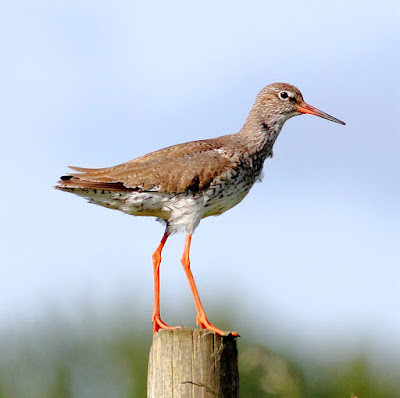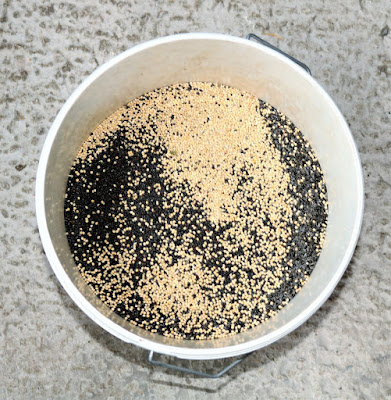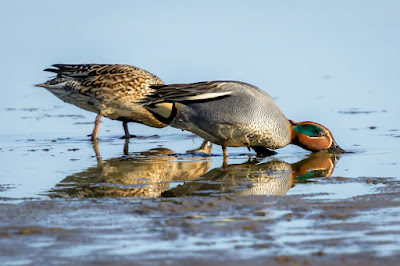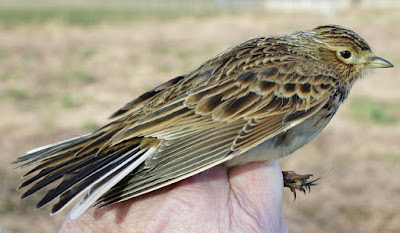I may not get out this week. Storm Brendan is on the way from Canada. I think it's payback time because we sent them Harry and Sparkle.
My gout has returned with a resolve to keep me indoors this week. For now here is a tale of Menorca with lots of pictures. Click the pics for a panorama.
Once the kids finished living the good life and made their way into the big wide world, Sue and I took a few holidays. It’s fair to say we got around a bit; Caribbean, Malaysia, Mexico, The Golden Triangle, Thailand, Goa, Sri Lanka, et al. I also spent a couple of spring times undertaking voluntary ringing work at Long Point, Canada, helping locals get to grips with handling wild birds.
Eventually the long hauls became tiring and wasteful for us both. Two days travelling at either end of each holiday was no longer a thrill to tick just another spot on the globe. We looked around for somewhere to spend a couple of weeks in Spring or Autumn - a decent sort of place without Brits in Union Jack shirts or bars that promised “Full English” and 50 inch sport until 2am; somewhere we might relax, explore and discover.
We found Menorca, a two hour flight away and where a 15 year love affair began.
The Menorcan landscape is like the Yorkshire Dales on steroids, but with wall-to-wall sunshine and clear blue skies 24/7. The smooth as glass and super fast roads are no-expense-spared, courtesy of the EU’s mammoth unverified budget and thanks to a hefty contribution from long-suffering British Taxpayers. In spring wildflowers dominate the landscape in countless shades and voluminous hues.
Menorca
Menorca
There is one main road in Menorca that links the capital Mahon in the east to the earlier capital but now second city of Ciutadella in the extreme west. Think of the island roads like the bones of a Dover Sole with the backbone down the centre and minor bones heading off north and south.
The minor bones lead to the seasonal and coastal holiday resorts May to October because Menorca shuts up shop to sun seekers from November to April. A Menorcan winter in the middle of the Mediterranean Sea can be wet and windy, rather like a March day in in Blackpool or Brighton.
https://www.map-of-spain.co.uk/large-map-of-menorca.htm
We mostly based in the well-mannered south coast holiday resort of Sant Tomas where the sun shone hot and long, and from where we spent most days, or mornings at least until the afternoon sun beckoned. From here we explored the countryside and visited real Menorcan towns like Alaior, Es Migjorn, Es Mercadal or the fishing village of Fornells rather than sunshine resorts. Not for us the few plebby, honky-tonk resorts in the south west of the island that in part mimic the worst of both Ibiza and Majorca, Menorca’s sister Balearic islands. If we wanted that we could stay home and hit the M55 to Blackpool or Lytham St Annes.
Es Migjorn
Fornells
Es Migjorn
Alaior
Es Mercadal
Often we’d drive into the second city, Ciutadella, a fine old city with an authentic vibe, a charming port, and an old quarter with good examples of Baroque and Gothic architecture. Ciutadella used to be the capital of culture and commerce in Menorca. It has supposedly been superseded by the official capital Mahon but any Menorca aficionado will tell you that Ciutadella or “Vella I Bella”, the Old and Beautiful, is the finer of the two.
Ciutadella
The Gothic cathedral of Ciutadella in Placa de la Catedral dates back to the 13th century. Although it’s impossible not to take photographs of its domineering presence, as an odd couple of lapsed Catholic and agnostic we never felt the need to enter, but rather to simply marvel at the awe-inspiring dimensions.
Placa de la Catedral
Ciutadella
The port of Ciutadella is both a fishing and leisure port with an abundance of waterside restaurants which line the quay. Early risers get to watch the fisherman bring in the local catch of the day. From here there’s a ferry over to Alcudia in Mallorca (Majorca), if you really have to. The Placa d’es Born is one of the most picturesque squares in Ciutadella, on what used to be a former Arab marching ground; an obelisk now stands to commemorate the Turkish invasion of 1558.
Placa d’es Born
In the old streets there’s a fish market and a row of butcher’s shops that sell free range chicken, pork and beef that once upon a time you could buy in any British town until out-of-town supermarkets destroyed them. And then there’s the serrano, air dried ham - choose your leg and gnaw away.
Serrano
We knew from previous visits that another day to Mahon (Mao) might coincide with a Med Cruise stop when spotless cruisers, released from captivity for the day, swarm along the lovely old streets looking for tat which local shops provide in abundance. After a couple of visits we gave it a miss just in case.
Mahon
In Menorca it’s impossible to buy a bad cup of cappuccino and where Costa Coffee is but a bad dream. We learned Spanish, or at least how to ask for “dos café con leche, por favour”. Y un ensaimada, Gracias”. We never did get the hang of Menorquí apart from “Bon Dia.”
Ensaimada, Coffee, Bocadilla
The two official languages of Menorca are Catalan and Spanish. Natives to the island speak the variety of Catalan called Menorquí, and they typically speak Spanish fluently as a second language.
A 2014 survey carried out by the Government of the Balearic Islands found that 53.5% of participants identified themselves as Catalan speakers, 36.7% as Spanish speakers, and 7.7% as bilingual speakers. Quite where the islanders stand on the question of Catalan independence and that the EU insist Catalans are Europeans we don’t know. Suffice to say that in fifteen years we never discussed politics with a native, only with other British holidaymakers, more so since June 2016.
Many Menorquins still practice traditional farming. Spring flowers and Mediterranean birds thrive, but even here this historic farming technique is on the decline in favour of agri-monoculture, the policy that has destroyed so much of Britain’s diversity of flora and fauna during the last forty years.
Our fifteen years in Menorca saw perceptible declines in some species of flowers and native birds, although being on a migration path to and from Europe and Africa, the island still provides a stop-off point for birds on that journey in spring and autumn.
Menorca in May
In 2014 I spent a morning with Javier helping with his local version of Constant Effort Ringing. In following years we always bumped into Javier on our travels as he led springtime birding and walking tours around the island
Sardinian Warbler
Mediterranean Flycatcher
Javier
In spring the valles (valleys) and roadsides throb with the sounds of warblers, Bee Eaters, Hoopoes and Nightingales, so much so that I swear the Nightingale is the most common bird of the island. Trying to see this highly secretive bird, day or night is another matter. Fortunately there are other special birds to enjoy, and even the resident Hermann's Tortoise to admire, very often at the risky roadside where cars and oblivious occupants speed by. Sue became my dependable spotter and camera minder when the promise of a later glass of rioja worked like magic.
Woodchat Shrike
Black-winged Stilt
Audouin's Gull
Cattle Egret
Egyptian Vulture
Purple Heron
Stonechat
Bee Eater
Mediterranean Flycatcher
Corn Bunting
Turtle Dove
Heerman's Tortoise
Tawny Pipit
Red-footed Falcon
Scops' Owl
Hoopoes - A Menorca Love Story
Menorca was quiet enough for us. From 2005 and all through the global financial downturn we found the peace and quiet we desired on an island we could discover with little help from brochures and tourist guides. A simple map and a hire car was all we required. We made friends of locals and tourists alike. Hotel and shop staff greeted us like long lost pals and we to them.
Menorca
And then in 2017 came changes. The self-governing Balearics decided that tourism should increase and that the tourists themselves should contribute to the cost of the necessary infrastructure. In came a tourist tax that added another Euro 90 to our not inconsiderable bill for two weeks at a four star. In addition, every year the price of our room increased by 10%.
In came “improvements” and extensions to the once small and user-friendly airport. In 2018 and 2019, we lined up outside the terminal like naughty schoolchildren then spent two hours and three hours at passport control where two Policia youths scrutinised our pale British faces for signs of terrorism.
Once cleared of extremist preferences, the queues for hire cars snaked through the hall but luckily we had a local contact who met us outside away from the madding crowds to lead us to a waiting Panda.
Our self-discovered noiseless spots became loud and overrun with boisterous, shouty people. And then came the bikes, hordes of them riding in impassable convoy along once quiet byways and tracks, yelling so that all could hear their inanities; throwing their water bottles onto the verge or stuffing them into ancient stone walls along once deserted roads.
Punta Nati
Menorca had become not quite a hell-hole, but not the place we grew to love. The island was in danger of killing the goose that laid the golden egg.
Menorcan Donkeys
We may go back but for now have decamped to Greece where we found a new love.




































































































